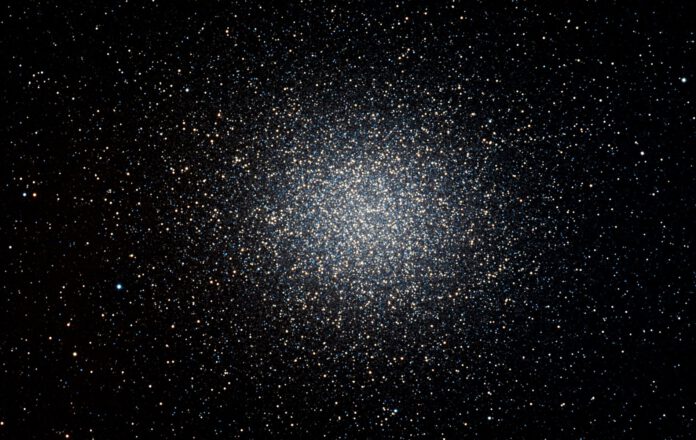
Discovery of the Nearest Massive Black Hole
At the center of a star cluster, researchers have discovered the closest massive black hole ever found. This black hole, with an estimated mass of at least 8,200 times that of our sun, represents a missing link in our understanding of black holes.
Omega Centauri: A Stellar Cluster
Omega Centauri is a globular cluster located in the constellation Centaurus. This cluster contains about ten million stars and appears as a faint spot in the night sky. Through a small telescope, Omega Centauri might not seem much different from other globular clusters. However, recent research has confirmed what astronomers have suspected for a while: Omega Centauri harbors a central black hole.
Nearest Massive Black Hole
Researchers estimate that the black hole at the center of the star cluster has a mass of at least 8,200 times that of the sun. “This black hole is approximately 18,000 light-years away from us,” said researcher Nadine Neumayer. “This makes it the closest known example of a massive black hole.”
This black hole is intermediate in size between smaller stellar black holes and much larger supermassive variants, appearing to be the ‘missing link.’ It is in an intermediate phase of evolution, with a significantly smaller mass than the typical black holes found in the centers of galaxies, like the supermassive black hole in the center of the Milky Way.
Variety of Black Hole Masses
Black holes come in different sizes. On one hand, we have stellar black holes, with masses ranging from a few solar masses to a few dozen solar masses. On the other hand, we have supermassive black holes with masses of millions to billions of solar masses. According to our current understanding of galaxy evolution, the earliest galaxies would have had intermediate-mass black holes at their centers. These black holes would have grown over time by consuming smaller galaxies or through mergers with larger galaxies.
Challenges of Detection
The challenge lies in finding intermediate-mass black holes, as it is extremely difficult. Galaxies like the Milky Way have long grown past that intermediate phase and now contain much larger central black holes. Small galaxies, known as ‘dwarf galaxies,’ are generally hard to observe. This means it is challenging with current technology to observe their central areas, where a black hole might reside. While there are promising candidates, astronomers have not yet succeeded in spotting such an intermediate black hole.
Unique Characteristics of Omega Centauri
Omega Centauri stands out because it is closer and more observable than other similar objects. Moreover, the star cluster seems to have originated from the core of a small, separate galaxy that was incorporated into the Milky Way, stopping its further development. Researchers had suspected that if Omega Centauri contained a black hole, the galactic core with its central black hole would be “frozen in time.” There would have been no further mergers and no chance for the black hole to grow, maintaining its size since Omega Centauri was absorbed by the Milky Way.
Seven “Needles in a Haystack”
Confirming this hypothesis required detecting a black hole at the center of Omega Centauri. Previous attempts were unsuccessful. Researchers created a comprehensive catalog of star movements within the star cluster. They measured the velocities of 1.4 million stars by studying more than 500 Hubble images of the cluster, a painstaking task. “It was like searching for a needle in a haystack,” said researcher Maximilian Häberle. Eventually, Häberle not only compiled the most extensive catalog of stellar movements in Omega Centauri to date, but he also discovered seven “needles in the haystack”: seven prominent, fast-moving stars in a small area at the cluster’s center.
Mass of 8,200 Solar Masses
The stars are moving rapidly because there is a large, heavy mass close by. For an individual star, it would be difficult to ascertain what this ‘heavy mass’ is precisely. However, the observation of seven such stars leaves no room for mere coincidence. It ruled out all other explanations except a black hole. By observing these seven stars, each with its own speed and direction, researchers concluded that there is a heavy mass at the center of Omega Centauri, with a mass of at least 8,200 times that of the sun. “This discovery not only ends the long-standing debate about an intermediate-mass black hole in Omega Centauri,” said Neumayer, “It is also the best candidate so far for the detection of an intermediate-mass black hole in general.”
The researchers plan to examine the center of Omega Centauri more thoroughly with the James Webb Space Telescope and future instruments such as GRAVITY+ on ESO’s VLT and MICADO on the Extremely Large Telescope. These instruments can determine stellar positions even more precisely than the Hubble Telescope, helping to answer deeper questions about the nature and behavior of black holes in our universe.











